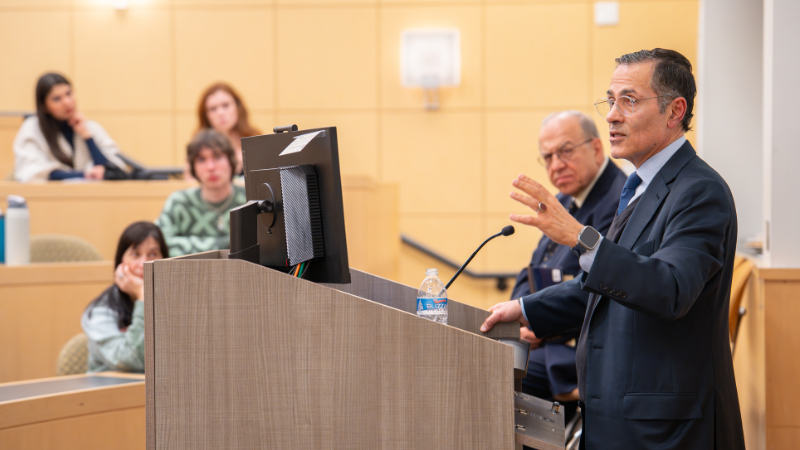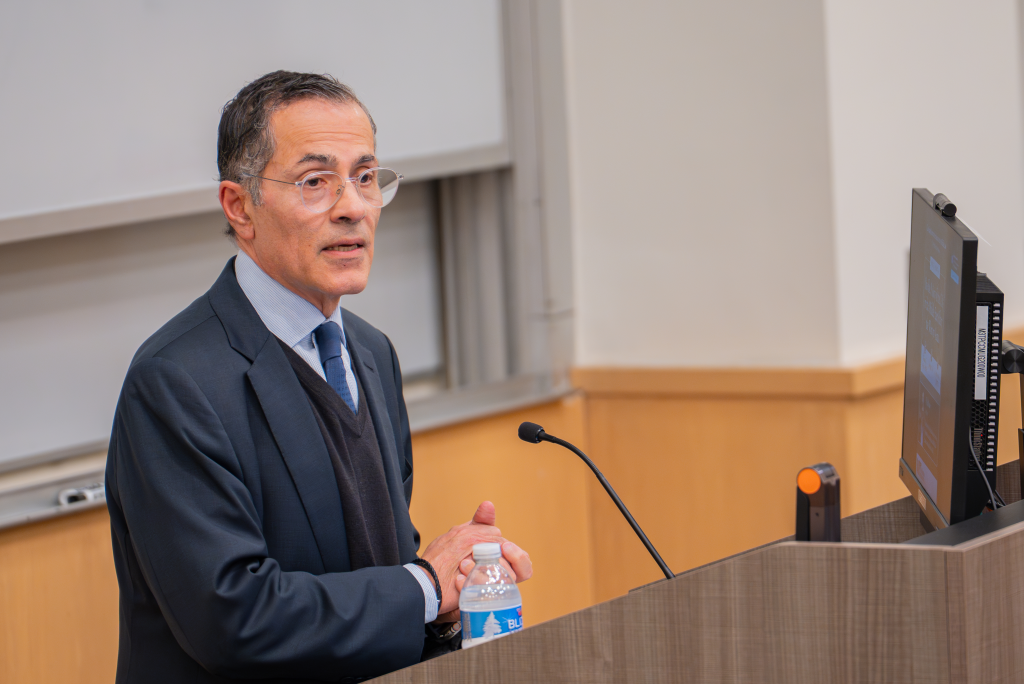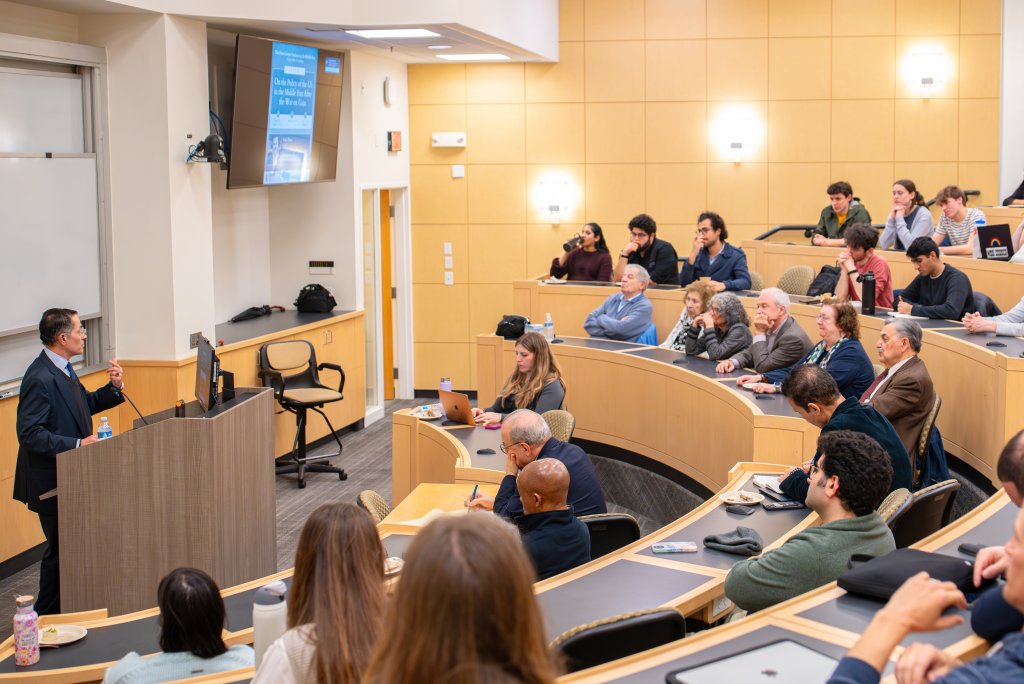
The Policy of the U.S. in the Middle East After the War on Gaza
On April 3, 2025, the Fares Center hosted Professor Vali Nasr, Majid Khadduri Professor of International Affairs and Middle East Studies at Johns Hopkins–SAIS, former Dean of SAIS (2012–2019) and Senior Advisor to Ambassador Richard Holbrooke (2009–2011). Professor Nasr’s lecture focused on the role of the U.S. in the Middle East in the context of the war on Gaza.
Professor Nasr began by discussing the U.S.’s approach to the region prior to October 7, which he characterized as applying maximum pressure on Iran while relying on the Abraham Accords to streamline Israel’s ties with the Arab world. This approach stemmed from a shared belief among the U.S., Israel, and several Gulf states that Iran and its proxy forces were the region’s primary threat. However, Professor Nasr asserted that Israel’s war on Gaza dramatically changed the geopolitical landscape in the Middle East.


Professor Nasr noted that the region has now entered a phase of unprecedented realignment. In his lecture, he explored how Iran’s influence in the region has been severely weakened by Israel’s campaigns against Hamas and Hezbollah. He also discussed how several Gulf states, such as Saudi Arabia and the UAE, are recalibrating their policy after the war on Gaza revealed Israel’s robust operational reach.
Overall, he noted that America’s Arab allies are growing less fearful of the threat posed by Tehran, more weary of Israeli dominance, and increasingly concerned about the prospects of war between the two countries. Professor Nasr discussed how such shifts have impacted U.S. policy in the region, primarily regarding a nuclear deal with Iran. On this topic, he discussed the growing divide between Israel’s position and the positions of other U.S. allies in the region. He observed that the Gulf states may become increasingly important in both America’s efforts to reach a new nuclear deal with Iran as well as its broader foreign policy approach to the region.
